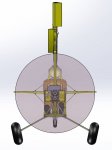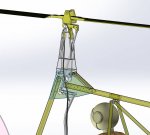BarryK Could you give an example of the many before with my attitude? Were they all failures? How is flying a tractor gyro that hard. The master said in his manual that if you can ride a bicycle, you can fly a gyro. I think I will take his word over all that have added their grave cautions on this forum.
I think I will trust Mr. Bensen over the other posters here. Riding the Suzuki Bandit 1200S, takes considerable skill if you ride it to even half its potential.
Please name some failures, please be specific.
Here you can read about 239 wrecked Bensens:

www.ntsb.gov
Those are only some that were reported within the U.S. alone. Many (most?) of the old-timers who self-taught the Bensen way tore up at least a set of rotor blades (perhaps more than one set over the course of self-training), put the bits in a pickup truck to take home, and told nobody about it, so it didn't even show up in the records. Some went on to become good pilots while others didn't, and some are dead. And the search results above are only the Bensens, not including many other more recent designs.
We're all glad you enjoy your Suzuki, but it is wholly irrelevant. A gyro is not a flying motorcycle. The skill set is completely different. Vance Breese had the skills to race the AMA circuit professionally and do things in his streamliner at Bonneville that would make your Suzuki look as slow as a moped, but he is one of the strongest advocates here for competent training by a CFI for all pilots, and when he started in gyros, he sought out instruction for himself at great expense and personal inconvenience. You have already dismissed his advice; that's not wise.
How hard can it be? That's a seriously inane question. Hard enough for you to tear up an aircraft, and/or your body, and be another data point for the insurance companies to use against the rest of us.
Your state of mind as reflected in the comments you provided perfectly reflects what the FAA calls a "hazardous attitude". They've seen people kill themselves for too many decades, and have studied what sort of person it happens to. You've already demonstrated three of those attitudes, including what the FAA calls "anti-authority", "invulnerability", and "macho".





